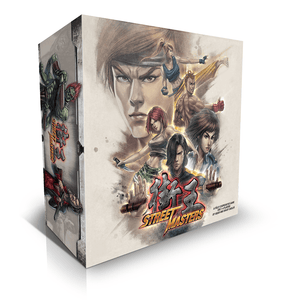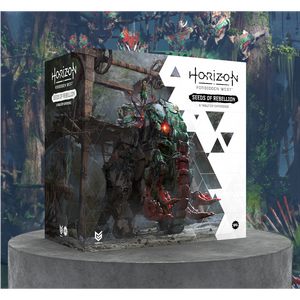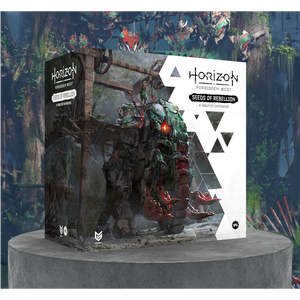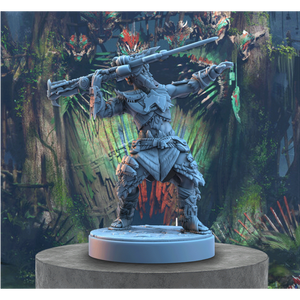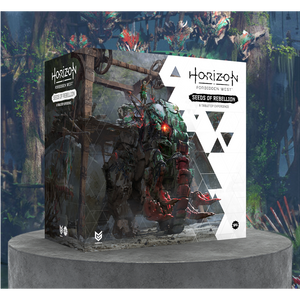Ahoy Shipmates!
For those of you who I haven’t had the privilege of speaking to before, my name is Sherwin Matthews, and I’m one of Steamforged Games’ designers and product owners. This means I’ve been fortunate enough to work on some incredible titles, such as Resident Evil™, Monster Hunter™, Elden Ring™, Dark Souls™, Horizon™, Gears of War™, and several more that I can’t tell you about right now!
However, as much fun as working on each of those games was, I’m not here to talk about them today. This article is instead here to talk about a brand new game that I’ve been working on, alongside Mat Hart (Steamforged Games’ creative director) and our license partners at Rare for nigh on three years now.
The game? Why, that would be Sea of Thieves™: Voyage of Legends.

I can’t express how excited I am for this game to hit the table. All of our games are unique and oftentimes dramatically different to each other, but Sea of Thieves™: Voyage of Legends manages to be even further apart again. If I had to describe it in one simple sentence, I’d describe it as an open world 4X-lite (if you’re not familiar with the terms, don’t worry. I’ll explain them soon enough).
Over the next few weeks, I’ll be diving into the game to discuss not only the rules and mechanics, but also the concepts, ideas, and design and development process that went into creating this game, as we brought it from the whiteboard to the tabletop. I’ll also be sharing a bunch of the assets with you too, showing off cards and tiles from the game as I go, to illustrate the look and feel of the game.
So, where to get started?
Well, I guess back to the very beginning of how I and the rest of the team approach our games…
Extracting the Core DNA
Several of you will have heard this before, as I typically mention it at the start of any project, but once we start working on a licensed game, the starting place is always to map out what we internally coin the ‘core DNA’ of the property.
This typically involves immersing ourselves completely; watching, playing, reading, and interacting with as many touch points as we can. This isn’t just for the media itself either, but also learning about the community and their experiences, as well as the little in-jokes and references they use, so we can understand why the community is into their favourite game and what they like so much.
(Oftentimes, of course, we’re already fans, which helps. Then, the process typically involves the staff superfans creating presentations for other members of staff, much to their delight at getting to ‘geek out’…)
Once we’re done, the next step is coming together to discuss what we’ve learned—and out of this quickly start to fall the key themes our game will need to include, specific mechanics that need to be represented in some way, and most importantly, how the game should feel to play.
After all, the most important element to understand when looking at any property is always what makes it feel unique, and makes it stand apart. Get that right and the game will always resonate with the audience, no matter how abstracted mechanics might get, because we’ll always be evocative of their favourite game and world.
Now, with that in mind, let's talk Sea of Thieves™ specifics!
Before I get too much further, it’s worth noting I could probably talk for hours about the visual look and feel of Sea of Thieves™, as it’s certainly one of the most powerful elements of the game.
As this is principally an introduction for game design however, I’ll leave that for a later article with our graphic design wizards, as they’ll be able to talk far more eloquently about how it influenced their process when it came to cards and layout.
Exploring the High Seas
So, what is the core experience of playing Sea of Thieves? Well, this one has an obvious and easy answer, and a not-so-obvious and not-so-easy one.
The obvious—being a pirate! Travelling around on the high seas, exploring islands, digging up treasure, and fighting either other pirates, skeletons, and sea monsters.

The not so easy one then… how is Sea of Thieves™ unique, or different to other pirate games? And here is the difficult one to pin down, once you take the visuals away. After a lot of consideration, my conclusion is that Sea of Thieves™ feels the way it does because of the community and their interactions—with the world and its events, and also each other. Or, put another way, it’s the character of the setting.
Everything in Sea of Thieves™, from the NPCs and enemies, through the areas you explore and items you find, to the tone of the game itself is dripping with a very special flavour. And once I had that answer, I knew that’s where we had to drill into to make our tabletop experience feel like the video game.
There are a lot of levels to this, and an awful lot of jargon I could accidentally stray into, but said simply, we needed to remain evocative of that flavour at all times, even if we were mechanically doing something new. And if something started to feel like too much of a departure? We reeled it back in.
Take fighting the kraken, as a quick example.
For starters, combat. Combat needed to be fun and quick to resolve, and because we knew that this would be the first time a lot of people have looked at a tabletop game beyond family parties spent around a Monopoly board, straightforward and familiar.
So, dice were in—everyone understands them, and they’re as strong a random number generator has ever existed.
But, I hear you ask, what about special items and ammunitions, such as Blunderbombs? I definitely wanted those to be added into the mix too. For starters, they’re a nice call back to the game, but also an example of the flavour I mentioned.
Throughout all of the development and when adding such elements, our team remained conscious that we not go down too crunchy a route either. So dice modifiers and multipliers were carefully edited down to an absolute minimum, and kept simple where they remained.
And that’s just combat itself. The Kraken? Now that’s a different story.
Such a magnificent and larger than life beast needed to be accompanied by a sense of storytelling. Therefore, it doesn’t just appear suddenly, but the suspense slowly builds over consecutive turns as it gets sighted out amongst the waves.
And when it does appear? Why, fighting it remains quick to resolve, but happens in several stages, where players are faced with the decision of whether to try and earn loot and reputation by driving it off, or just escape before their ship is ruined.
How does that all work? Well, that’s the next update…
Until next time, shipmates.
Keep Your Eye Out For The Next Update…
Come and chat with Sherwin and the rest of the SFG team in the comments below, and on the SFG Discord servers here.

 Join us on Discord
Join us on Discord


